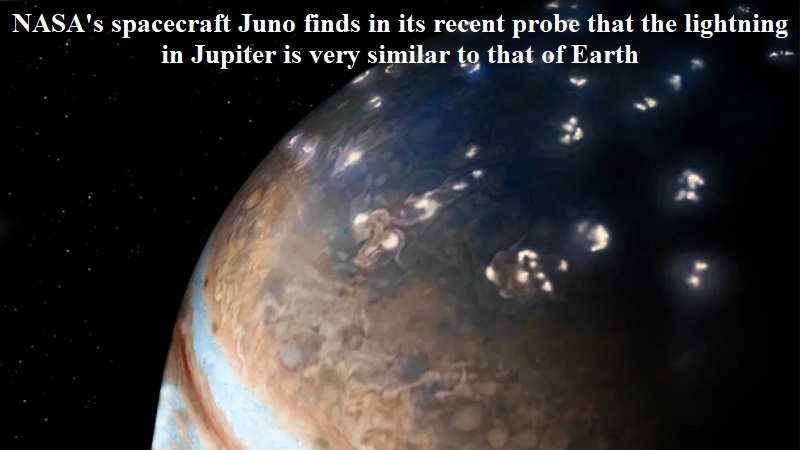
NASA’s Juno spacecraft has recently discovered that the lightning on Jupiter bears striking similarities to that on Earth. The composition of the brownish ammonia clouds that envelop Jupiter is akin to the water-based clouds found on our planet.
Multiple spacecraft, including Juno, have captured the eerie sight of lightning within Jupiter’s clouds, resembling the way lightning typically occurs within Earth’s clouds.
Scientists note that despite the dramatic differences between the two planets, the data collected by Juno provides fresh insights into the similar processes underlying lightning formation on Jupiter and Earth.
According to planetary scientist Ivana Kolmasova from the Czech Academy of Sciences’ Institute of Atmospheric Physics, lightning is an electric discharge initiated within thunderclouds. Charged ice and water particles within the cloud collide and form layers of similarly charged particles, creating a substantial electric field that triggers the discharge. However, the exact mechanisms inside thunderclouds are still not entirely understood.
The presence of lightning on Jupiter was confirmed when NASA’s Voyager 1 spacecraft recorded telltale radio emissions at audible frequencies during its journey through the solar system in 1979.
Lightning has also been observed on other gas planets in the solar system, such as Saturn, Uranus, and Neptune. While there is some evidence of lightning in Venus’ clouds, it remains a topic of debate among scientists.
Studies have identified similarities in the lightning processes between Earth and Jupiter. Although the lightning rates are comparable, the distribution of lightning on Jupiter differs from that on Earth. While Earth’s tropical regions are the most active, Jupiter experiences the majority of its lightning in mid-latitudes and polar regions. Additionally, Earth has minimal lightning activity near the poles, highlighting the likely differences in the formation conditions of thunderclouds between the two planets.
Previous attempts to compare the power of lightning based on optical measurements suggest that Jupiter’s lightning may be comparable to the strongest lightning on Earth. However, further analysis is planned to investigate this aspect.
Jupiter primarily consists of hydrogen and helium, along with traces of other gases.

Post Your Comments